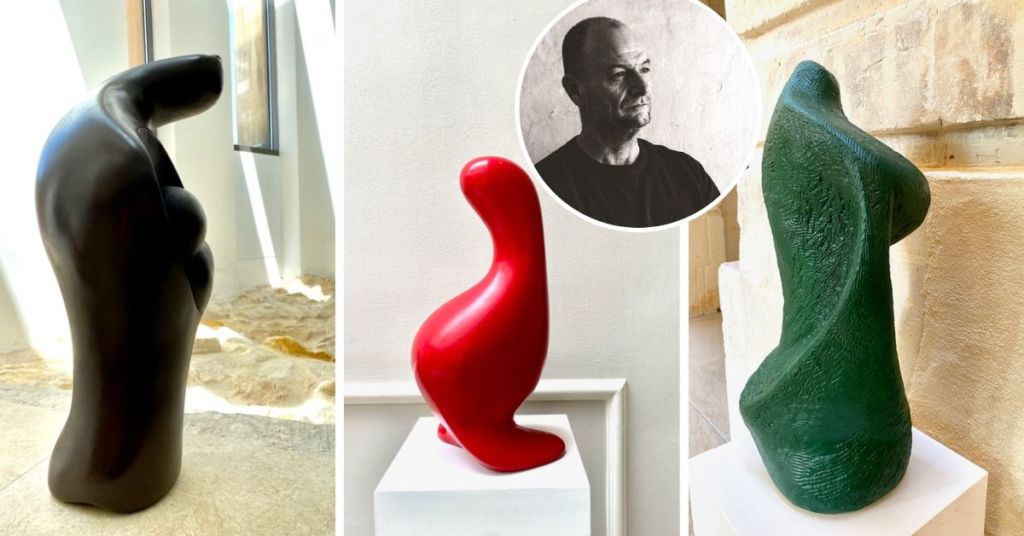An Array Of Colourful Sculptures Resembling Human Figures By Local Sculptor Launching Soon In Floriana

Local sculptor Antoine Farrugia is launching an unseen body of work, this time featuring a colourful array of sculptures that resemble the human figure, created back in 2017.
Made from Malta’s own Globigerina Limestone, known as Franka in Maltese, the sculptures effortlessly capture elements of Maltese culture and are set to be exhibited at the Phoenecia Hotel in Floriana from 13th June.
“They are abstract figures made from Franka, treated with colour. You cannot just paint directly onto the rock, so first, I had to place layers of gypsum and varnish. To me, they are different creatures – creatures with different forms and colours,” Farrugia told Lovin Malta.
“When I first created these figures I thought about the different forms found within humanity – some people are thin, some are thick, some are short, some are tall,” he explained.

“A soft palette of pink skies just before dusk and the setting sun caressing the honey-coloured limestone of the Maltese island’s historic buildings, prehistoric temples, churches and fortifications is an image that continues to captivate us,” the curator Charlene Vella told Lovin Malta.
“It is the local Lower Globigerina Limestone that makes these images so recognisably Maltese,” she said.
Franka has been used for Malta’s buildings for thousands of years for the islands’ architecture which is almost entirely stone-oriented and is also particularly suitable for sculpture because of its malleability.
Antoine Farrugia is a sculptor who was born, lives and works in Mqabba and is exhibiting a collection of coloured limestone sculptures. Mqabba, a town in the southern region of Malta, is one of Malta’s most important localities for its limestone quarries.
The Maltese Franka was said to be so highly regarded by the British administration that the stone for the building of the Neoclassical Palace of St Michael and St George on the island of Corfu, Greece, built between 1819 and 1824 and commissioned by Sir Thomas Maitland, was imported Maltese stone.
Limestone is therefore important for Malta not only culturally, economically and historically, but it is now serving as the main medium for a local sculptor to express an abstract mode of expression.
“They are striking for the vivid palette with which they have been finished, sprayed on a surface that is polished and highly reflective in most cases but textured in others. This leaves the viewer questioning what the material actually is, for the way Farrugia manipulates the limestone is particular,” the curator’s note reads.

“These sculptures in purple, red, green, pink and more, brighten any environment they are in and are particularly suitable for The Phoenicia Malta’s spa which is bathed in light and has a play of light and shadows that changes how these organic sculptures appear to guests,” it reads.
“These abstract sculptures are purposely untitled for the viewer to imagine them to be whatever they want. Although being seemingly abstract works, this intrepid sculptor finds inspiration in nature and the human form, a natural point of reference to many artists.”
Farrugia held his first solo exhibition in 2003 and has participated in several solo and collective exhibitions, having also travelled to China as a guest artist in July 2016.
His work has not yet ceased to amaze for the way he masterfully sculpts the stone into his desired shapes.
Tag someone that needs to catch this exhibition
